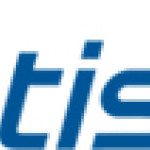- Branche: Telecommunications
- Number of terms: 29235
- Number of blossaries: 0
- Company Profile:
ATIS is the leading technical planning and standards development organization committed to the rapid development of global, market-driven standards for the information, entertainment and communications industry.
A device used in digital transmission systems to convert digital signals into a pseudorandom sequence that is free from long strings of simple patterns, such as marks and spaces. Note: The data scrambler facilitates timing extraction, reduces the accumulation of jitter, and prevents baseline drift.
Industry:Telecommunications
A device used to exclude unwanted frequency components, such as noise or other interference, of a wave. Note: Traps are usually tunable to permit selection of unwanted or interfering signals.
Industry:Telecommunications
A device used to invert the sense of pseudorandomly selected bits of a bit stream to avoid long sequences of bits of the same sense. Note: The same selection pattern must be used on the receive terminal in order to restore the original bit stream. 2. An analog or digital source of unpredictable, unbiased, and usually independent bits. Randomizers can be used for several different functions, including key generation or to provide a starting state for a key generator.
Industry:Telecommunications
A device used to match the impedance of a transmitter and/or receiver to an antenna to provide maximum power transfer.
Industry:Telecommunications
A device used to prevent overall voice-frequency singing in a two-way telephone circuit by ensuring that transmission can occur in only one direction at any given instant.
Industry:Telecommunications
A device used to select, reject, or attenuate a certain mode or modes.
Industry:Telecommunications
A device used to terminate, position, and hold an optical fiber within a connector.
Industry:Telecommunications
A device which can only be used to process information of a single security class at a time.
Industry:Telecommunications
A device whose output data are a representation of the sum of the numbers represented by its input data. Note: An adder may be serial or parallel, digital or analog. 2. A device whose output data are a representation of the sum of the quantities represented by its input data. Note: An adder can add things other than representations of numbers. It can add voltages, etc. Analog adders are not limited to summing representations of numbers. An adder may operate on digital or analog data.
Industry:Telecommunications
A device, accessible to one or more input circuits, that accepts and stores data. Note: A register is usually used only as a device for temporary storage of data. 2. A temporary-memory device used to receive, hold, and transfer data (usually a computer word) to be operated upon by a processing unit. Note: Computers typically contain a variety of registers. General purpose registers may perform many functions, such as holding constants or accumulating arithmetic results. Special purpose registers perform special functions, such as holding the instruction being executed, the address of a storage location, or data being retrieved from or sent to storage.
Industry:Telecommunications
